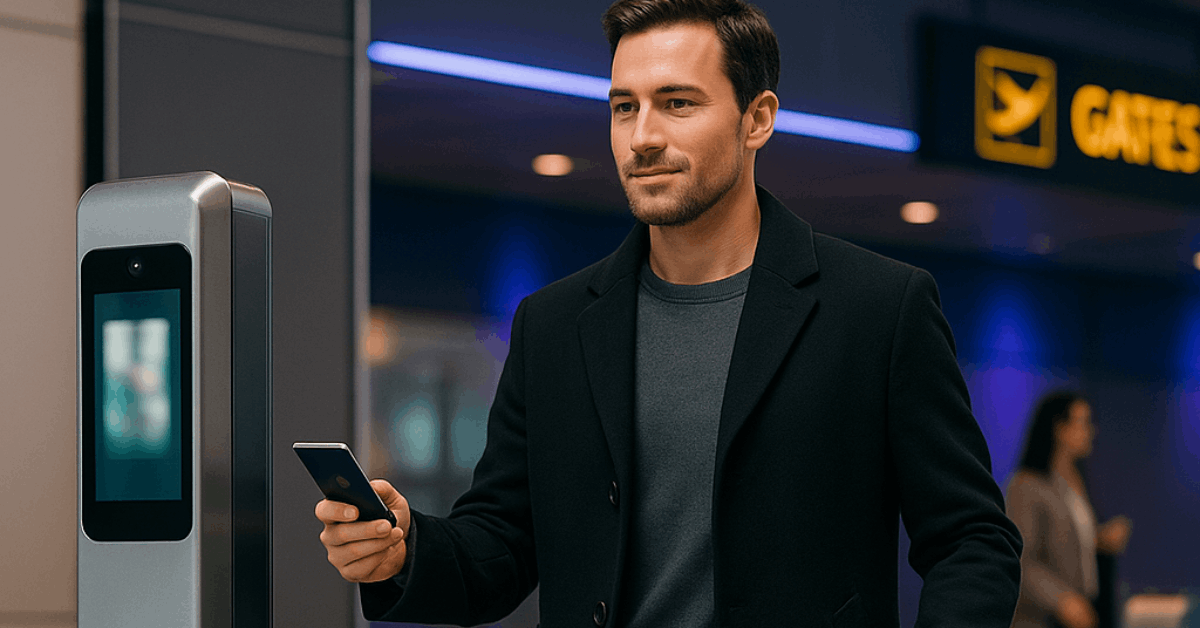Early Departure Introduced for Business Travelers marks a practical shift toward same-day flexibility and faster trip turnarounds.
Corporate flyers faced volatile rules in 2020–2022; carriers responded by relaxing change fees and building tools that make itinerary changes less painful.
Expect earlier-flight options to be marketed clearly, bundled with perks, and supported inside airline and booking apps. Demand justifies the pivot: business travelers historically generated 60–70% of airline sales, making flexibility a competitive imperative.

What “Early Departure” Means Now
In most networks, “early departure” is a same-day confirmed change to an earlier flight on the same route, often with standby as a backstop.
Policies differ by carrier and fare; premium cabins and higher status tiers typically receive priority during reticketing windows.
Removal of most domestic change fees by major U.S. airlines during the pandemic period set the baseline; today, many itineraries can shift earlier without a punitive penalty, though fare differences or specific same-day fees can still apply.
Better Preparation
Corporate travelers benefit most when eligibility rules, windows, and costs are understood before departure day.
Set expectations internally: some tickets allow free same-day switches, others charge a modest fixed fee, and basic-economy-type fares may remain ineligible. Carriers also limit reroutes; same airport pairs and same calendar day are common constraints.
Why Airlines Are Formalizing Flexibility
Revenue resilience depends on winning back premium demand. Trade-group and industry forecasts show business travel spending rebounding toward, and in several regions exceeding, 2019 nominal levels between 2024 and 2025, reinforcing why airlines lean into flexible products.
GBTA projected global business travel at roughly $1.48 trillion in 2024 and $1.57 trillion in 2025, with regional variation.
Executives also understand that flexibility changes behavior. United publicly quantified billions in forgone change-fee revenue since 2020 while highlighting customer uptake of time changes, evidence that policy shifts stimulate switching into earlier flights when plans firm up.
How Early Departure Works Across Major Carriers
Practical execution still lives in each airline’s ruleset. The snapshot below focuses on widely referenced U.S. policies; global carriers offer similar mechanisms with local nuances. Expect app-first workflows and clear prompts when seats open.
Key notes before comparing: same-day confirmed changes usually require inventory in the same fare or cabin; where unavailable, free standby may appear. Even where change fees are eliminated, fare differences can apply.
| Carrier | Policy label | Eligibility and typical cost |
| Delta Air Lines | Same-Day Confirmed / Same-Day Standby | Confirmed changes allowed when inventory exists; fee often $75 for general members; waived for Gold, Platinum, and Diamond; standby sometimes free. Details vary by fare, origin, and cabin. |
| United Airlines | Same-day change / Flexible booking | No change fees for most non-Basic fares; same-day earlier flight allowed within 24 hours on same route; price difference may apply even when fees are waived. App enables seat/flight selection and standby. |
What Early Departure Changes for Corporate Travel Programs
Tighter meeting agendas can be supported without building extra hotel nights or cushions. Travel managers can authorize same-day flight change usage under defined cost caps and eligible fare buckets.
Approvers gain better predictability, since earlier returns reduce per-diem exposure and limit unplanned overnight stays. Procurement also benefits from negotiated bundles that include lounge access, priority security, and Wi-Fi, classic bundled fare perks aligned to productivity.
Expense systems should map codes to early-departure scenarios so finance sees time-change impacts separately from full itinerary reissues. Policy text ought to distinguish between voluntary earlier departures for convenience and operational reaccommodation after delays, keeping audit trails clean.
Digital Enablers that Make Early Departure Smooth
Airline and booking apps now surface inventory, reissue choices, and documentation in near real time. App flows add operational prompts, gate cutoff times, baggage rules, and rebooking eligibility, reducing calls to agents and accelerating gate moves.
United and Delta publish flexibility hubs that detail change policies and embed same-day options directly into the trip timeline. Health documentation remains less prominent than in 2021, yet digital passes pioneered during the pandemic improved the ecosystem.
CommonPass and IATA’s Travel Pass standardized how test and vaccination data could be verified, setting expectations for future health or visa credentials that might emerge.
Service, Privacy, and the Contactless Airport Experience
Service models keep trending toward lower-touch interactions where automation speeds throughput. Self-service tagging, biometric gates, and app-based notifications compress the dwell time between curb and seat, helpful when targeting an earlier flight.
In premium cabins, privacy-forward seating and doors in business-class suites continue to spread on new aircraft types, reflecting comfort and perceived safety priorities voiced during recovery years. Lounge access attached to flexible bundles supports short pre-flight work windows.
Policy shifts on ancillary fees have also evolved. Many carriers that removed change fees, improving flexibility, still rely on revenue from checked bags and seat selection, so early departure should be planned alongside those costs, where relevant to budgets.

Quick Checklist to Use Early Departure Effectively
Short decisions on a busy travel day benefit from a concise plan. The steps below keep approvals fast and costs predictable.
- Confirm fare eligibility in the app and note any fare difference before submitting.
- Check seat maps for the earlier flight; target the same cabin to avoid repricing surprises.
- Capture policy notes in the request—“same-day earlier flight, meeting ended early”—for audit clarity.
- Leverage status benefits where available; waivers often apply to top tiers under airline loyalty flexibility.
- Notify ground transport and hotel; early checkout can free room inventory and reduce incidental spend.
Policy Design for Travel Managers
Program language should explicitly authorize early-departure use cases that deliver measurable value, reduced hotel nights, lower meal per diems, and faster project cycles. A flexible corporate travel policy can set a ceiling for same-day fees or fare differences and require the use of approved channels to retain duty-of-care coverage.
Integrations with mobile travel management apps bring the request-and-approve flow into one screen, raising compliance without adding friction.
Negotiated corporate bundles help normalize costs. Contracts may include same-day change fee waivers, lounge entries, and prioritized standby. These bundled fare perks work best when paired with data sharing so suppliers can report how often early departures reduce overall trip cost.
Risk Management and Traveler Well-Being
Fatigue rises when on-the-fly itinerary changes cut rest time. Program guidance should ask travelers to balance speed with rest obligations, especially after evening meetings.
Duty-of-care systems must track live flight swaps so security teams maintain accurate manifests. App-based trip monitoring can send updated pickup details to drivers automatically, supporting a contactless airport experience at the curbside.
Conclusion: Market outlook
Analysts expect continued normalization in business travel demand, with some regions expanding faster than others.
Rising spend through 2025 supports the case for flexible trip structures, especially where hybrid work compresses in-person meetings into tighter windows.
Forecasts from GBTA emphasize growth with divergence across sectors, which means airline flexibility remains a differentiator while companies fine-tune travel ROI models.









